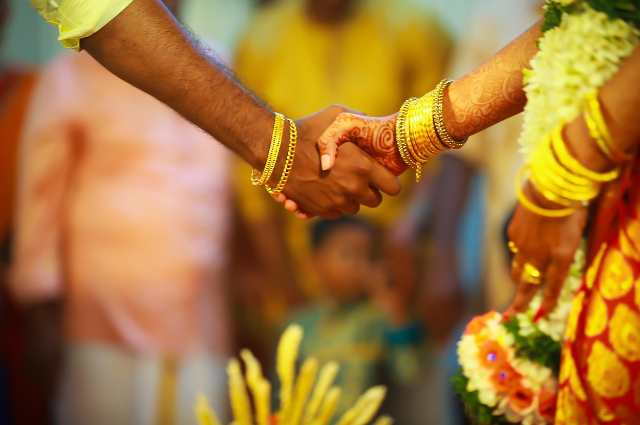
Image by ANOOP VS from Pixabay
Let’s talk about dowry, India’s age-old tradition that somehow shapeshifted from “a token of love” to a full-blown price tag slapped on a bride’s forehead. Despite being banned since 1961, dowry is like that one toxic ex who keeps showing up at weddings uninvited, wearing a fancy sherwani and pretending to be "just a gift."
And the worst part? Society still let's him in.
A Brief History of the Dowry Disaster
Once upon a time, in a land of kings, queens, and a whole lot of patriarchy, dowry wasn’t the monster it is today. Back in the Vedic era, it was supposed to be a daughter’s share of inheritance, a voluntary gesture from her family to help her start a new life. There were no demand lists, no Excel sheets with gold-to-car-price ratios, no emotional blackmail. Just goodwill.
But over time, as women’s inheritance rights shrank and patriarchy flexed harder, dowry twisted into something ugly. It morphed from "Here, take this to support our daughter" to "If you don’t give us a car, we'll find another bride who will." And just like that, marriages became less about love and more about logistics.
Women were no longer seen as contributors, but as commodities and dowries, the price for “taking her off their hands.”
Dowry’s Glow-Up: Rebranded, But Still Toxic
Fast forward to today, and guess what? The Dowry Prohibition Act is still very much in place. But in reality, it’s about as effective as putting a Band-Aid on a bullet wound.
Now, instead of openly calling it dowry, we’ve repackaged it with cute little euphemisms: "gifts," "customs," "voluntary contributions," or my personal favorite, “a token of affection.” (Because nothing screams affection like a 20-lakh SUV.)
You’ll hear it at weddings:
“We didn’t ask for anything; they gave it out of love.”
Translation: We hinted aggressively and played the emotional guilt card until they caved.
“It’s tradition!”
Translation: “We’ve been doing it for generations, and changing it would be uncomfortable.”
And the irony? Families spend crores on a daughter's wedding, only to say she’s a liability. The math isn’t mathing.
But It’s Not Just About Money
Let’s be clear: dowry isn’t just a financial burden. It’s an emotional trauma, a societal pressure cooker, and in some tragic cases, a death sentence.
Every year, thousands of women in India face harassment, domestic abuse, and even murder because someone decided their “gift package” wasn’t premium enough. She’s tortured, threatened, or discarded not for who she is, but for what she couldn’t bring in shiny wrappers.
This isn’t a myth. This isn’t history. It’s happening now.
And let’s not forget the psychological weight it dumps on families with daughters. From the moment she’s born, a mental savings account is opened, “Shaadi fund,” they call it. As if raising a girl comes with a compulsory exit fee.
A son? An investment. A daughter? An expense.
This toxic accounting system makes families skip out on educating their daughters, push them into early marriages, or live in constant fear of not having “enough” to marry her off respectably.
The Social Media Sham
The modern wedding industry, of course, is cashing in on this like it’s a clearance sale. Scroll through Instagram and you’ll see brides wearing lehengas worth lakhs, surrounded by towers of gold, captioned with: “Papa’s princess, always!”
Meanwhile, Papa’s bank account is crying in a corner.
We celebrate extravagance while ignoring the exploitation behind it. We call it culture while quietly letting capitalism and patriarchy hold hands and do the tango on a girl's future. And all the while, this monster called dowry gets a free pass because hey, at least the wedding photos looked cute.
Let’s Talk About That Law Again (You Know, the One Everyone Ignores)
The Dowry Prohibition Act, 1961, was a legal mic drop that, unfortunately, everyone clapped for and then ignored. It criminalized giving and receiving dowry, but enforcing it? That’s a whole other drama.
Police often don’t take complaints seriously. Families don’t report abuse because “log kya kahenge” (what will people say?). And women? They’re caught in the crossfire of tradition, trauma, and toxic silence.
Until we stop normalizing this practice, no matter how “small” or “harmless” it looks, it will keep slithering its way into homes, hidden under the excuse of "custom."
Where Do We Go From Here?
Let’s face it, dowry won’t die just because it’s illegal. It dies when we collectively call it out for what it is: greed in ceremonial clothing.
It dies when parents stop treating daughters like financial liabilities and start raising them like equals.
It dies when men say, “I don’t want anything, just your consent.”
It dies when couples walk into a marriage with mutual respect, not mutual transactions.
It dies when Instagram starts trending #NoDowryPlease louder than #ShaadiGoals.
But that requires unlearning generations of deeply conditioned cultural nonsense. It means choosing awkward conversations at the dinner table over blind acceptance. It means confronting uncles, aunties, and rishta-wale bhaiyas when they ask the bride’s family what they’re “offering.”
It means redefining what love, respect, and marriage actually mean.
Because here’s the deal:
Dowry isn’t romantic. It’s not respectful. And it’s not love.
It’s a transaction disguised in glitter and wrapped in guilt.
It’s a patriarchy with a bow on top.
It’s a price tag pinned to a woman’s soul and it’s long past time we ripped it off.
Final Thought
If we truly want a society where women are treated with dignity, not as burdens to be “married off,” but as people with agency, purpose, and value, we need to burn the dowry system to the ground. And then build something better in its place.
So the next time someone says, “It’s just a gift,” look them dead in the eye and say:
“Cool. Then let the groom bring the same gift for the bride. Out of love, of course.”
Let’s see how fast that tradition changes.
